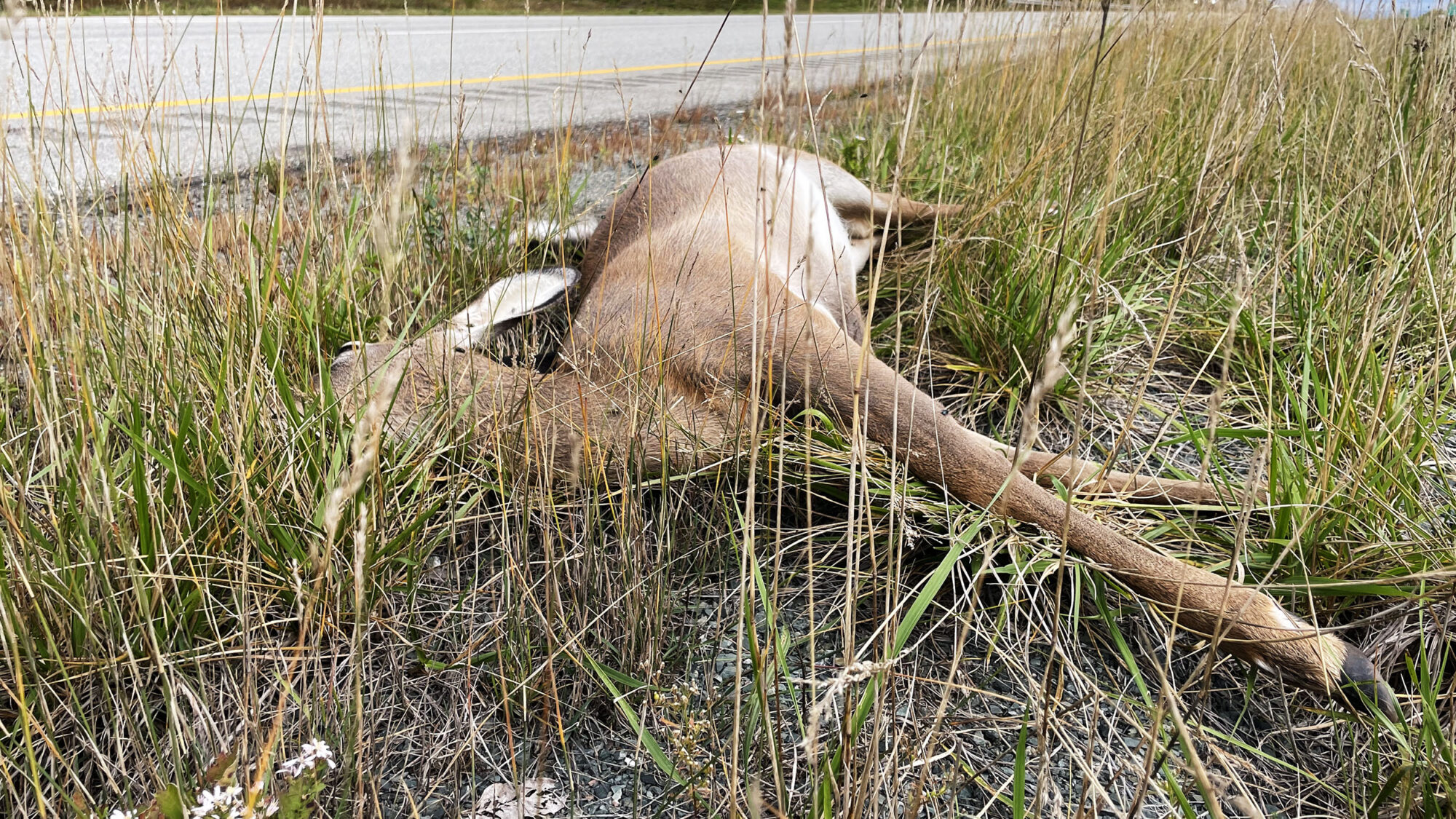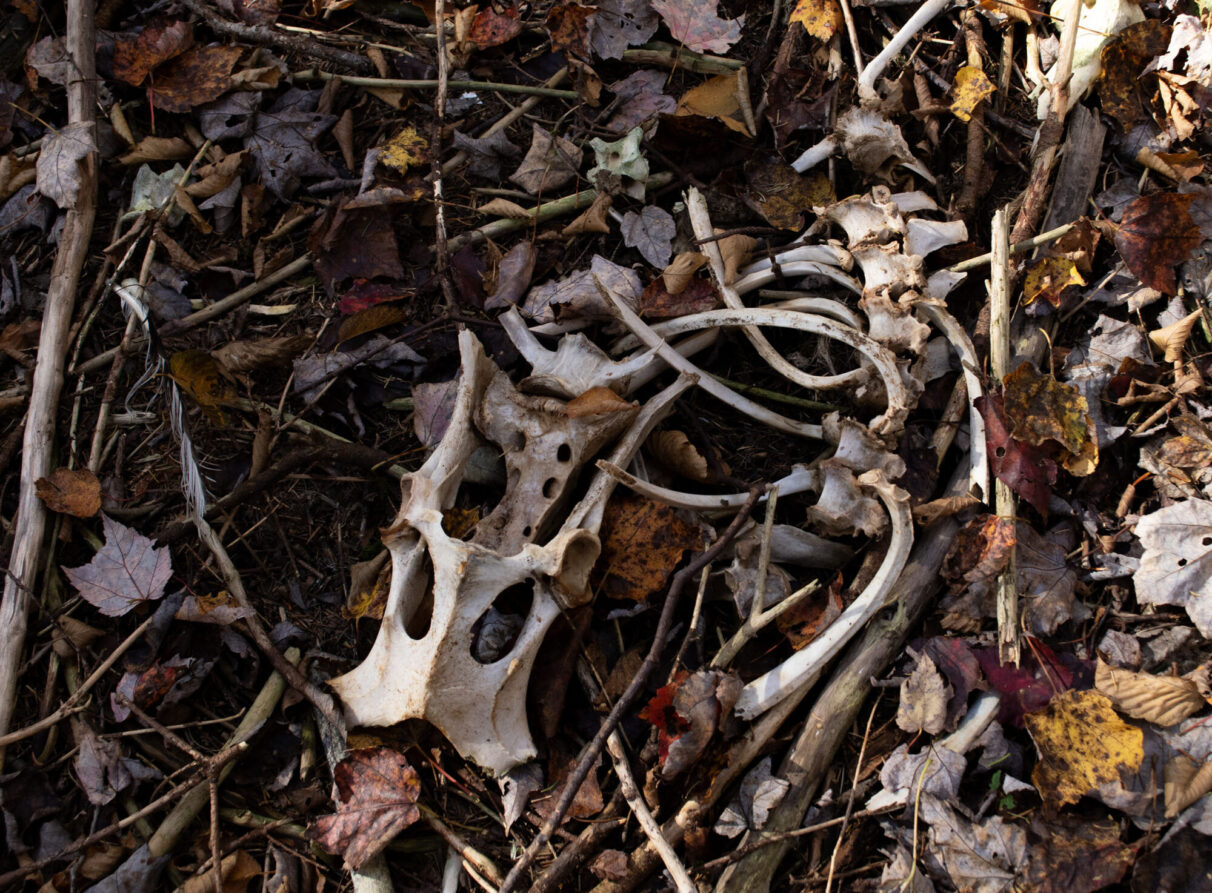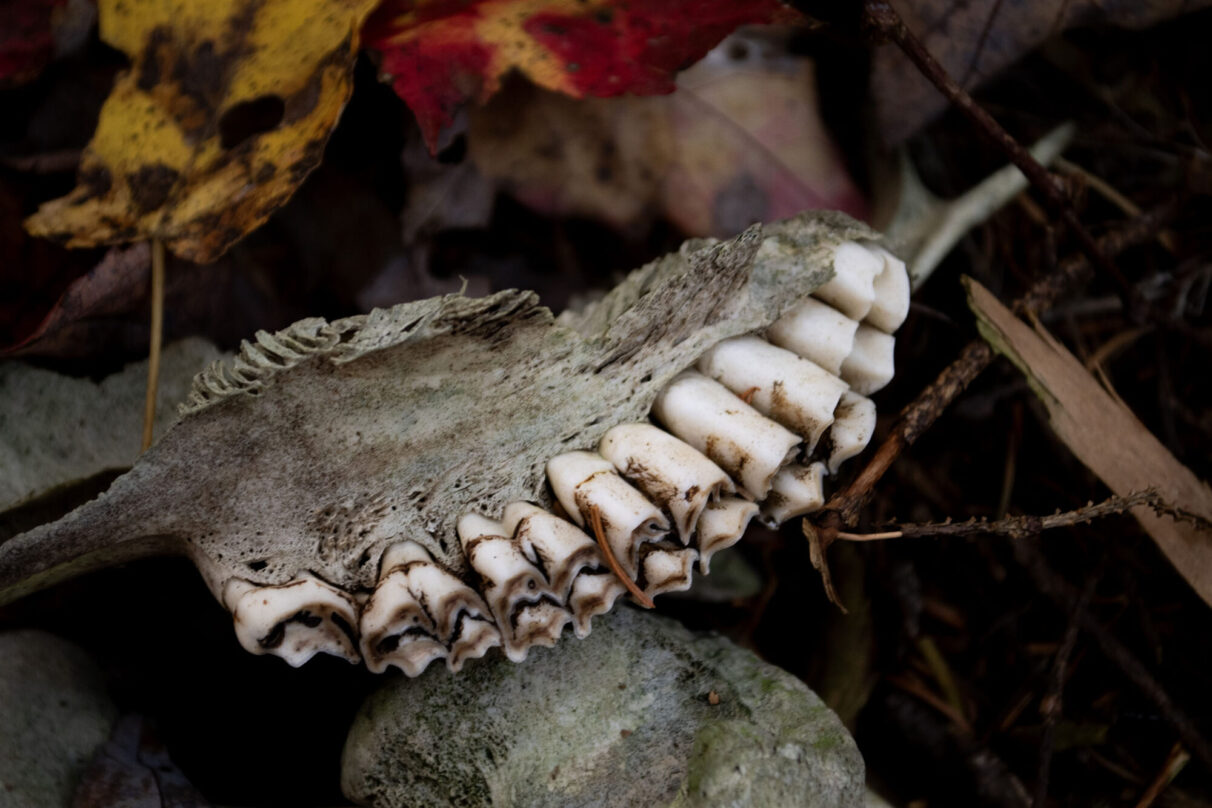The afterlife of roadkill

caption
Every year, government of Nova Scotia scientists autopsy road kill deer.The journey from roadside carcass to scavengers’ next meal
Trevor Wilkie says putting his hands inside a deer carcass is not so bad. He’s used to it, after more than 30 years of performing autopsies on the tailgate of his truck.
With nothing but a pair of latex gloves and hardware store tools, Wilkie cuts into the deer’s hind leg, pulling away the meat to expose the femur. Next, he lifts his axe and slams it down, cracking open the bone.
Every year, from Feb. 1 to May 15, Department of Natural Resources and Renewables (DNR) workers collect the corpses of roadkill deer to be autopsied. These standard procedures take only five to 10 minutes and do not require the animal to be brought to a lab.
These autopsies, Wilkie says, are not emotionally trying. The information gained is vital for understanding the deer population. This way, he says, no deer is going to waste.
“We need to get that information somehow,” he said. “So when a deer gets killed by a car or something at least we’re getting some kind of benefit. Plus we put it out for the scavengers. We’ll have everything from weasels to coyote to bear to, you know, eagles, crows – everything feasting on deer.”
Wilkie, who works out of DNR’s office in St. Peter’s, Cape Breton, looks for two main things when performing an autopsy: bone marrow and fetuses. Wilkie cuts open the femur to examine the bone marrow content. He can tell the overall health of the animal just by looking at the bone marrow.
“When it’s 100 per cent, it’s almost like wax on a candle,” he says. “As the deer starts using up that fat in the bone marrow, it can get more watery.”
By February, fetuses are developed enough for Wilkie to examine, making the spring the best time to perform autopsies. Wilkie cuts open the womb, causing the fluids to spill out. He counts how many young the deer was carrying, records what sex they were and measures their length.
These autopsies can get messy. Wilkie will be the first to tell you his truck has seen better days.
Understanding wildlife
In 2019 the Nova Scotia Habitat Conservation Fund, organized by DNR, published a study examining wildlife and roadway interactions in the Chignecto Isthmus, the narrow strip of land connecting Nova Scotia and New Brunswick. The study examined seven roads in the area for 15 weeks, from May to August 2018. Researchers counted 212 total mammal carcasses. These included 82 raccoons, 46 porcupines, six white-tailed deer and three black bears. According to DNR, among large mammals deer are the most commonly killed.
Jason Power, the senior provincial biologist with the wildlife division, who is based in Kentville, oversees all things large mammal-related. Power says these autopsies help the department understand how well the deer population is overwintering. “The better the body condition, the more fetuses they will have,” he says.
During the collection months, DNR collects all deer that get reported. After the field workers record the data, it’s sent to Power. He uses the findings to better understand deer management, estimate population and determine yearly harvesting laws.
The Department of Public Works helps DNR keep roads clear. In an email statement, Gary Andrea, a spokesperson for Public Works, said that if roadkill is found on a roadway or residential area, “it is collected… and removed.” In non-populated areas, such as highways, the roadkill is brought to designated carcass disposal sites. Public Works will collect any reported large animal, whether on the highway or on the shoulder. For smaller animals, they will collect those found in the middle of the road.
DNR also records deer droppings across the province to help determine the animal’s population.
Autopsies are only one of the ways DNR works to understand the health of wildlife. They are conducting a study to protect the province’s moose. In it, they analyze a type of brain worm common among white-tailed deer, which is particularly deadly to moose.
The study, done in collaboration with Acadia University, involves field workers removing the heads from deer carcasses and bringing them to the Kentville lab. There, lab workers cut open the skull and test the brain for worms.

caption
The Department of Natural Resources unofficially operates carcass disposal sites around the province.The domesticated difference
There’s a stark difference between domesticated animals and wild animals. Dogs and cats are waited on by their owners for their whole lives. We shelter them in our homes and feed them fancy food that promises to keep their teeth clean and promote a shiny coat. Any minor ailment sends many people rushing to the vet to keep their animal in top shape.
House pets live effortlessly luxurious lives. The fact that they never have to use their far-off survival instincts would be an embarrassment to their ancestors.
The truth is the animals we cohabitate with would never be able to handle life in the wild. They no longer have the ferocity of a wolf or the instincts of a wild cat. Wild animals have extremely heightened senses which, for thousands of years, have helped them hunt prey with the utmost precision and/or skillfully escape the jaws of a predator.
So why does a wild creature, who has adapted to survive the harshest conditions, wait until it is parallel to an oncoming vehicle to leap into the road, instantly meeting its death?
Leslie Bliss-Ketchum, an animal behaviourist and adjunct faculty member at Portland State University, chalks it up to the animal’s fight or flight response. When a deer gets too close to the side of the highway, it starts to feel threatened by the passing traffic.
“The deer feels like it needs to respond and flee,” she says. “But it picks the wrong direction and flees in front of the car.”
Deer in the headlights
Although it was more than 10 years ago, Peter Lee easily recalls the time he was riding in a car that struck a deer. He was in the back seat of his father’s car late one winter night in Nanaimo, B.C. It was raining heavily, with a slight fog. They were travelling through a residential area going 40-50 km/h. Suddenly, a deer hidden behind a parked car jumped in front of Lee’s vehicle.
There wasn’t much time to think between the deer jumping and the car sending it skidding down the road. When the car came to a stop, Lee, who was only 10 or 11 at the time, felt pins and needles in his hands. He was in shock. His first thoughts? “Is the car okay? Is the deer okay? Are we okay?”
Now that he’s older, the incident doesn’t cause him much grief. “Back home in Nanaimo,” he said, “you either hit a deer, know somebody who hit a deer, or were in a car with someone who hit a deer.”
He’s not far off. The Wildlife Collision Prevention Program – founded in 2001 in partnership with the British Columbia Conservation Fund and the provincially owned (auto) Insurance Corporation of British Columbia – is dedicated to making B.C.’s roads safer for people and wildlife.
A report using 2020 Insurance Corporation of British Columbia data found an average of 11,000 animal-related automobile collisions every year in B.C. That’s 30 a day – more than one an hour. The report also said that 80 per cent of wildlife-vehicle collisions in the province involve deer. An average of 870 motorists are injured in these collisions, and four each year are killed.
The car Lee was driving in sustained minimal damage. The deer wasn’t so lucky. It survived the initial impact, but barely. It lay limp on the road, struggling to breathe. Lee described what came next as an unpleasant, wet crack.
“I’m not sure if my father or the neighbour did it, but someone swung a hammer, and the deer was dead.”
The grave-less graveyard
Back in Nova Scotia, a small clearing in the woods off a Fall River service road shows only freshly fallen autumn leaves. Hues of red, orange and yellow cover rotting animal bones. The pine needle-covered ground obscures tufts of fur spread across the forest floor. The scattered bones look like something from a horror movie. Stumble upon them unexpectedly and you may decide to call your local authorities.
The ground is littered with so many bones it’s nearly impossible to walk without stepping on them. The loud cracking of ribs under each step is not the typical crunch of a fall hike. There are scapulas and pelvises of varying sizes, a few spines, some whole, others fragmented; the vertebrae scattered across the ground are so big that when stacked together, they would far out measure a human spine. Jawbones are still attached to rows of decaying teeth.
This animal boneyard is one of the province’s many carcass disposal sites operated by DNR. It’s near sites like these that Wilkie does his autopsies. When he is done, the carcass is quietly moved to the nearest unofficial DNR boneyard.
Thanks to scavengers, there is no smell here. They’ve already picked the bones clean of any trace of meat. Where one might expect the foul stink of rotting flesh is only the pleasing, fresh fragrance of crisp fall air.


